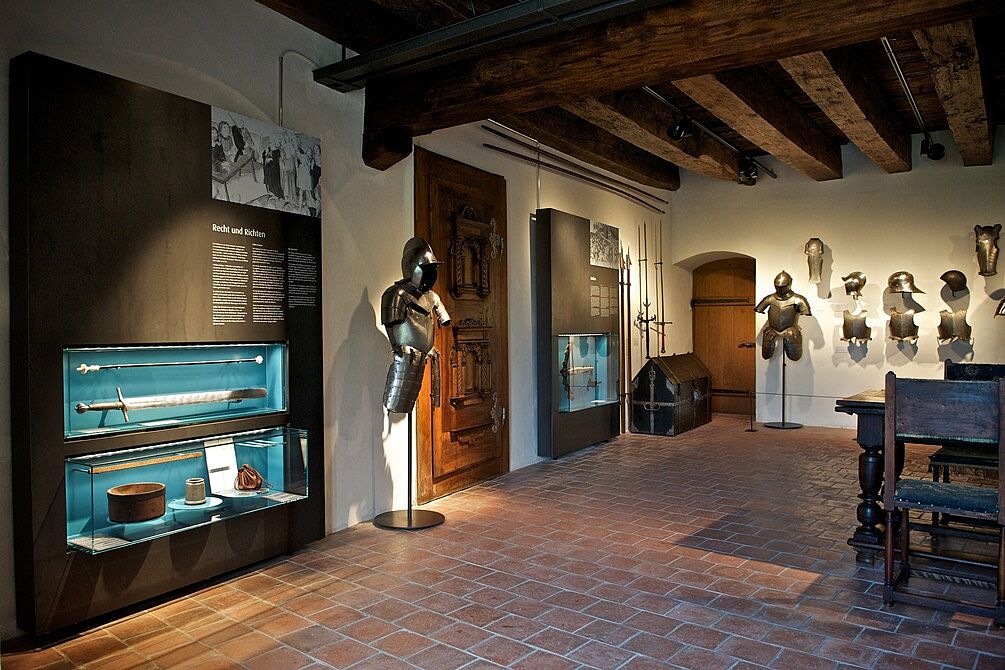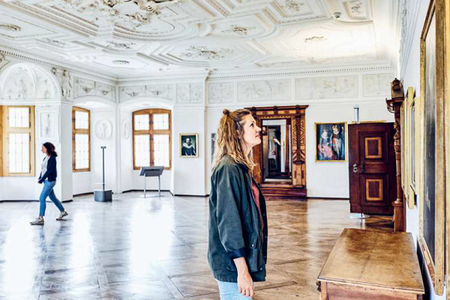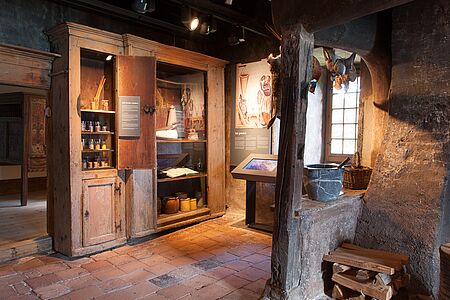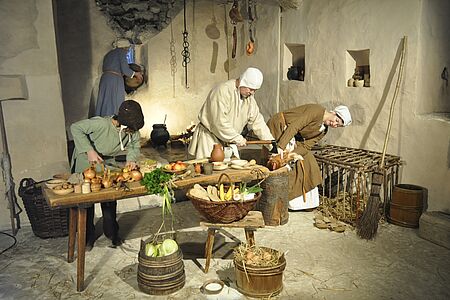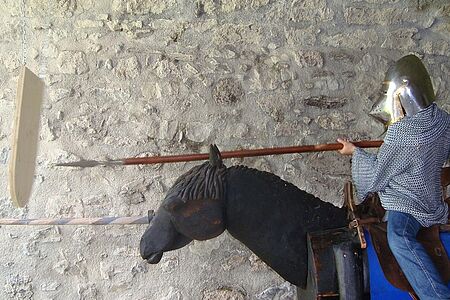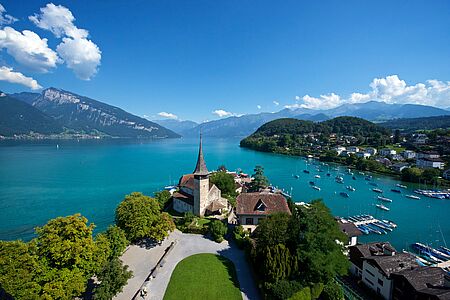Museum & Art Exhibition Spiez Castle
CASTLE MUSEUM
Changing eras and owners
During the Alemannic land seizure, a centre of power was formed on the peninsula on Lake Thun, which the richly endowed equestrian grave from AD 680 is proof of. The Lords of Strättligen had a great hall and a stone towerbuilt in the 12th century. They lived a chivalrous lifestyle which is shown by the graffities of tournaments in the tower as well as by the heritage of Heinrich von Strättligen as a minnesinger in the Codex Manesse. In 1338, castle and power came into possession of the Bubenbergs, who were strongly involved in Bernese politics. Adrian von Bubenberg is well remembered for being the hero of the battle of Murten during the Burgundy wars. In 1516, Ludwig von Erlach acquired the property and thus his family retained the ownership until 1875. Franz Ludwig von Erlach had a magnificent ballroom installed in 1614. Antonio Castelli from Ticino decorated it with stucco works of the early Baroque style. It was in 1927, when the Foundation Spiez Castle was established to maintain the castle and making it available to the public ever since.
Tracing history: the former castle residents
The exhibition in the castle museum focuses on the former residents. In the medieval residential tower, the world of Heinrich von Strättligen with his tournaments and minnesingers is brought to life. In the gothic rooms, there is Adrian von Bubenberg to meet on his horse. On the second floor, Franz Ludwig von Erlach, his two wives and their in total 37 children are waiting for a chat. While in the castle kitchen a feast is in preparation, a dance to lute music is happening in the Baroque hall.
ART EXHIBITION SAMUEL BURI & the Bernese Oberland
21 June to 20 October 2024
“The subject determines artistic language: I use internationally understood idioms for the Lowlands, while in the Highlands I paint in the vernacular.” Samuel Buri
The esteemed and well-travelled Basel-based artist Samuel Buri was born in 1935 in the Bernese Seeland, being equally at home in the Oberland. He is endlessly inspired by the landscape and motifs that surround him: interiors, meadows, flowers, streams and mountains.
Rooted in the French artistic tradition, Buri's journey has led from Tachism via Pop Art to a distinctive naturalistic compositional language, sometimes offset and synchronised with abstract elements. His creations are characterized by thematic series, intricate ornamentation, and the fusion of diverse stylistic elements. A striking feature, however, is his prominent use of colour – a true “feast for the eyes”!
Since the mid-1970s, Buri has frequently returned to Habkern, where he enjoyed holidays in his youth. Picturesque landscapes of Lake Thun are a recurring theme in his art, which is one of the reasons for exhibiting his vibrant and colourful works at Spiez Castle.
